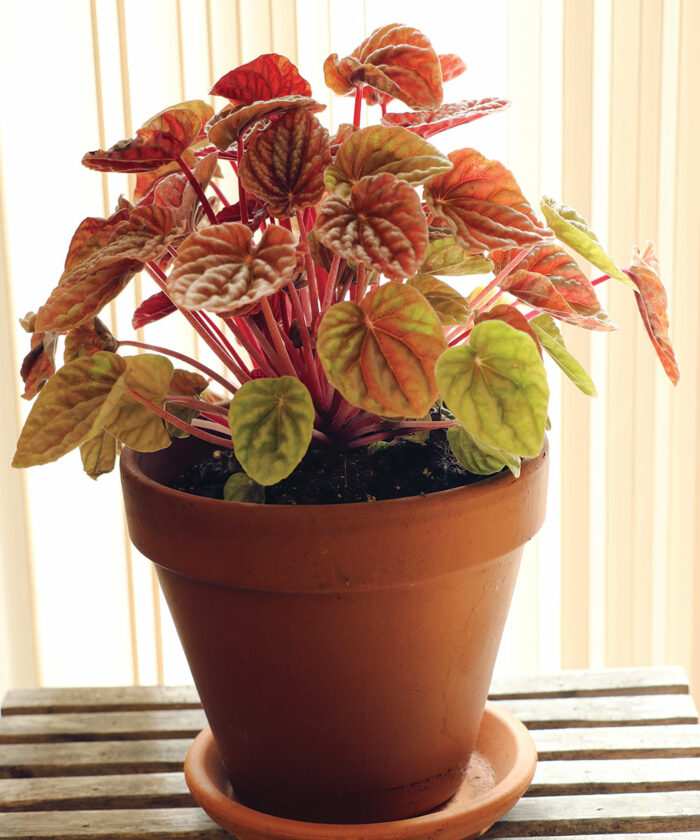
Radiator plants (Peperomia spp. and cvs., Zones 10–12) are beautiful and sturdy plants with overwhelming variety. While their flowers—like those of many houseplants—aren’t much to write home about, their foliage provides seemingly endless options in color, texture, and habit. Radiator plants can be green, variegated, or colorful; glossy or matte; fuzzy or smooth; and cascading or upright—and the list goes on. This diversity ensures that there is a perfect radiator plant for every person who can provide the right conditions. Here’s how to make sure they stay happy and healthy year-round.
Indirect light is key
These plants are great for the new plant parent who answers the question “How much light do you have?” with confused silence and a furrowed brow. Radiator plants don’t like full sun. They can take some morning sun but prefer medium to bright indirect light all day. These plants do well if kept under grow lights if you don’t have the proper natural light exposure. There are a plethora of LED options available that are energy efficient as well. It’s easiest to put the light on a timer (12 hours on, 12 hours off) and forget about it.
Let the soil dry between waterings
Radiator plants like it warm—hence their common name. They usually prefer temperatures that are 60°F or higher and are fine with average humidity. These plants want their soil to dry out between waterings. You can even put some extra perlite in the soil to help facilitate drainage. Water them once a week if they’ve dried out sufficiently, but if you forget for a few extra days, you will more than likely still have a plant to come home to. Radiator plants with thinner leaves need a touch more water since they store less in their foliage. The common species ripple radiator plant (P. caperata)—the cultivar ‘Quito’ is pictured above—falls into this category. Radiator plants are not heavy feeders and can skip a meal without missing a beat; if you fertilize them at least once a month during the growing season, however, they will reward you with quicker, lusher growth.
Give these specimens a try
With over 1,500 species and over 100 in cultivation, Peperomia is a super-diverse genus. Here are a few special selections that showcase this incredible variety.
Columnar radiator plant has see-through foliage
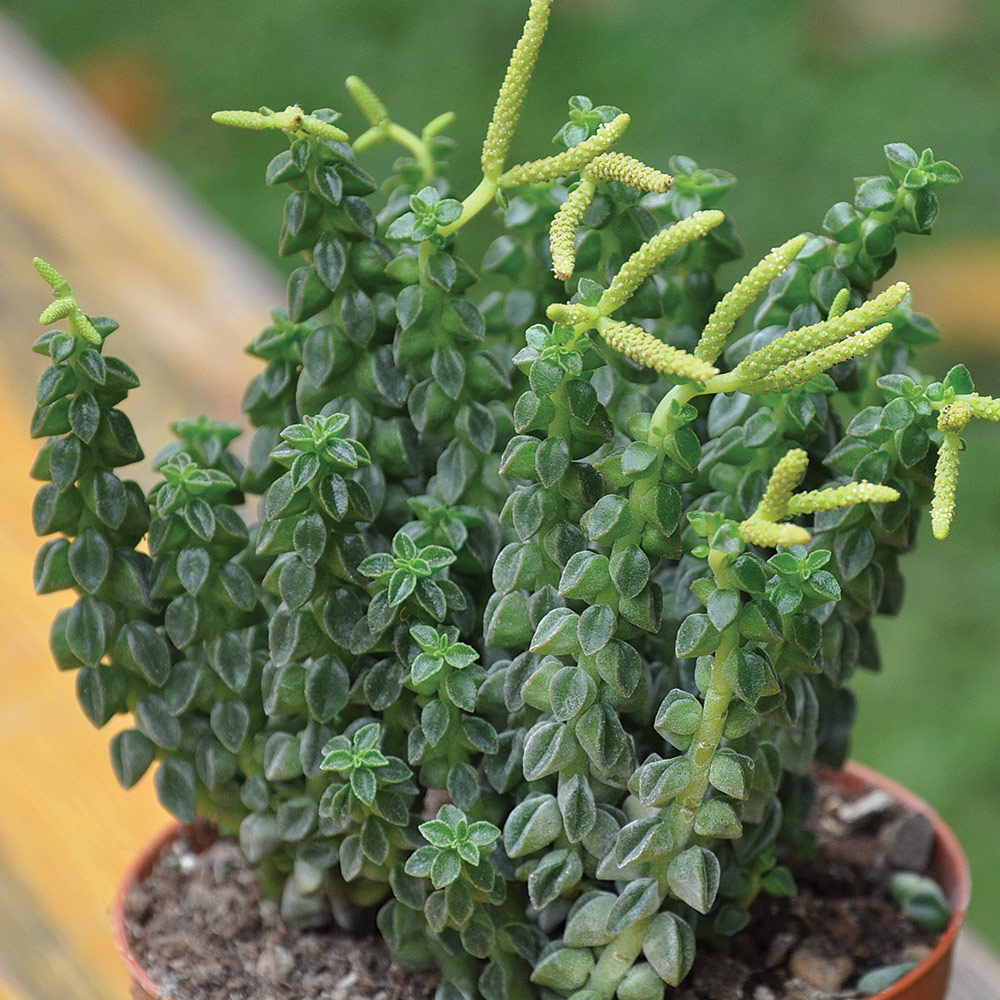
(P. columella, Zones 10–12)
This excellent, lesser-known selection is one of the true succulents of the genus. It grows small columns of leaves that are totally clear on their upper surface. These epidermal windows allow light to enter the leaves. As the stems lengthen, some will snake sideways or down over the edge of the pot. This radiator plant is better kept on the drier side. It tops out at around 8 inches tall and just as wide, making it perfect for a small space.
Variegated cupid radiator plant cascades like ivy
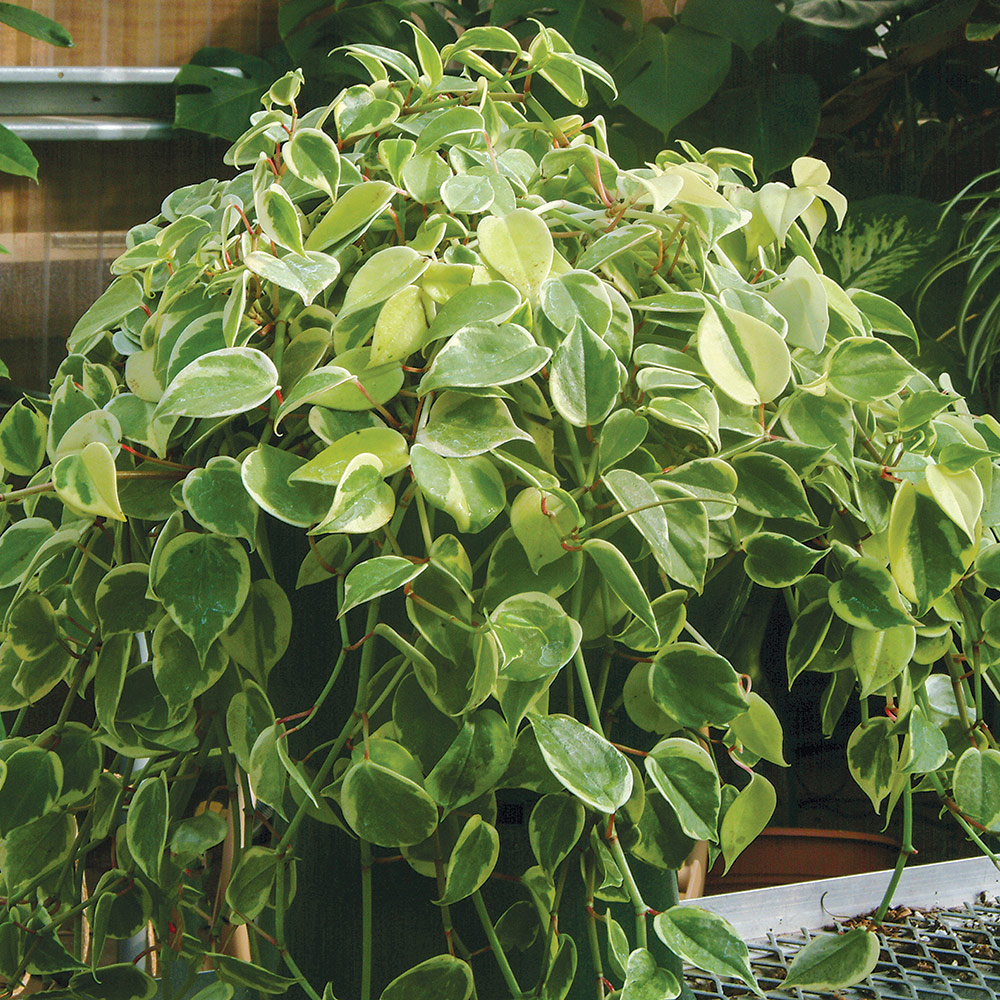
(P. scandens ‘Variegata’, Zones 10–12)
With its spilling habit, variegated cupid radiator plant is perfect for a hanging basket. Its heart-shaped leaves are a silvery green edged in buttery white, and it has stems that are slightly rosy. An epiphytic plant, this radiator plant does not require consistent moisture. It can reach about 3 feet long, but trim it as desired to maintain a shape you enjoy.
Felted pepperface features super-fuzzy leaves
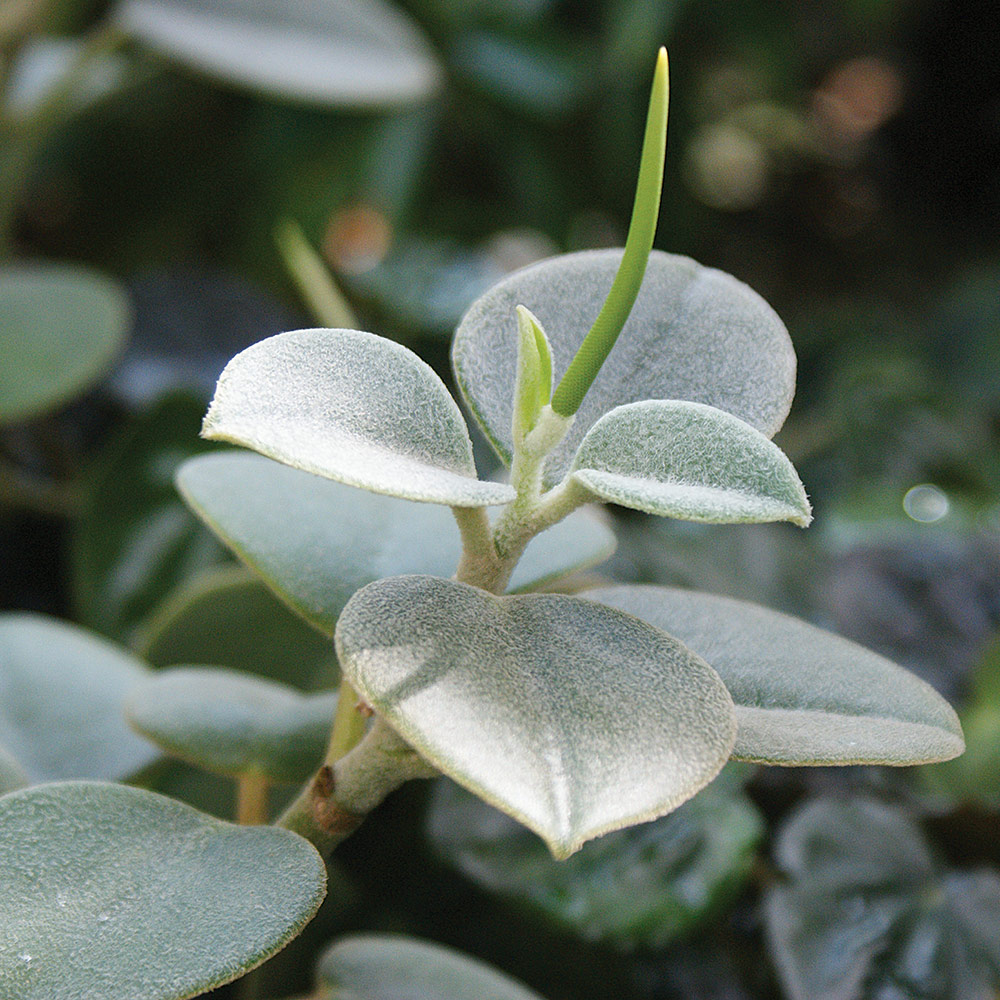
(P. incana, Zones 10–12)
Felted pepperface is one of my favorite radiator plants because its silvery green leaves are as soft as kitten ears. It has a softly weeping, shrubby habit and will grow about 1 foot tall and slightly wider. Felted pepperface seems to grow a bit faster when kept slightly moist, as when grown in a glazed or plastic pot instead of terra-cotta. When kept on the dry side, its growth is slower.
Common pitfalls to avoid
Learn the signs of these problems and how to prevent them.
Overwatering
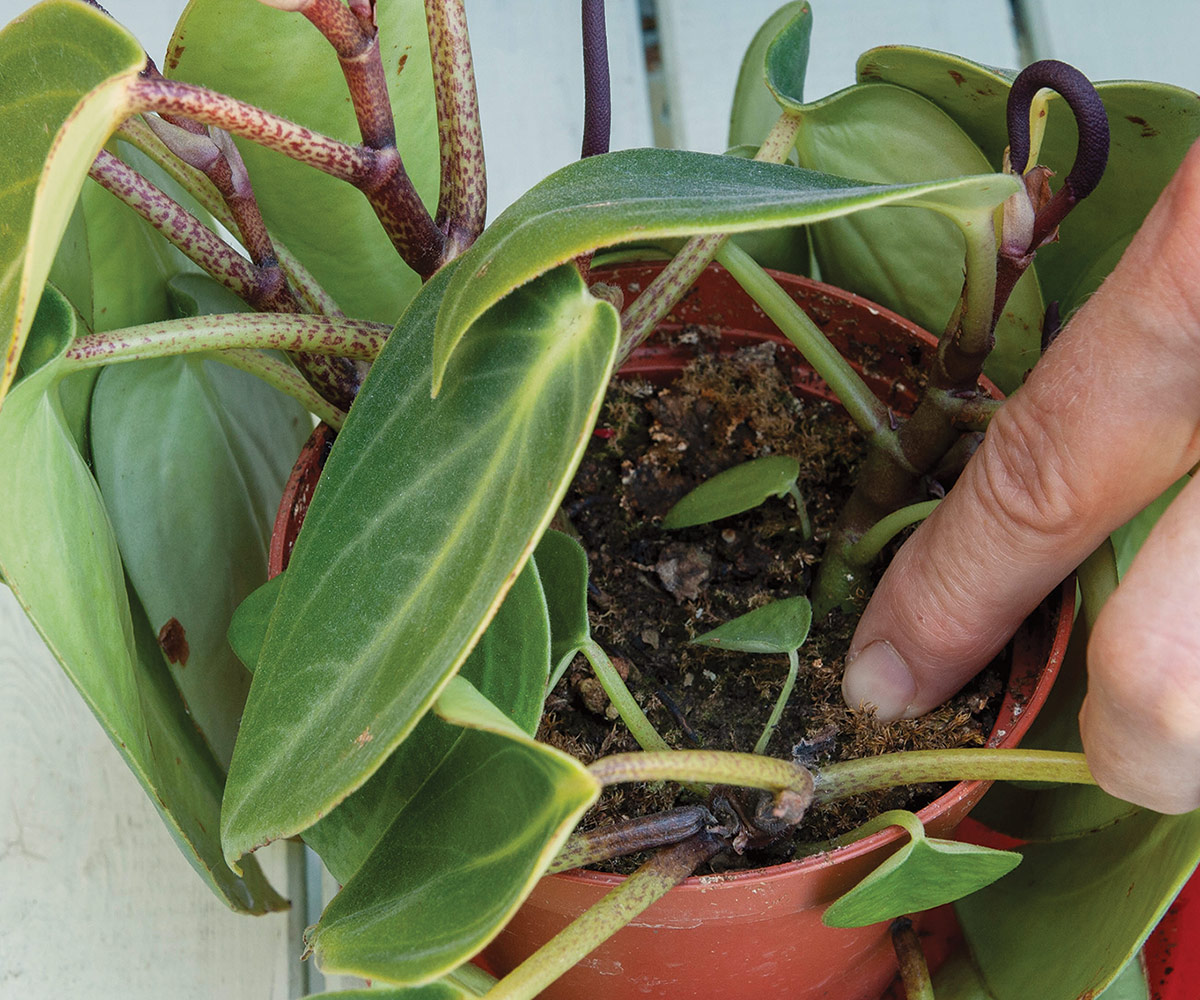
Providing too much water is the most common problem people have with radiator plants. Eliminating this stress can eliminate several other problems as well. You can recognize the symptoms of overwatering if the leaves start to wilt or become softer and darker than normal. It can be difficult for the plant to rebound from this if its root system has rotted. Check the soil with your finger before watering, and provide a pot with a drainage hole (pictured).
Pests

In general, radiator plants do not attract many pests, although a few can be prone to specific foes. Overwatering can cause fungus in the soil to grow, which can attract fungus gnats. Sticky traps are good at dealing with those infestations. These plants can also be susceptible to spider mites and mealybugs (pictured) if they are infected by another plant. Spraying down your plant with water is a good idea every now and then, which washes off dust and any pests. Inspect your plants as you water, looking at the undersides of leaves for insects or evidence of their feeding. Signs of a pest infestation can include brown patches, yellowing leaves, stippling, or small black specks on the leaf surface. Specific pests require specific treatment, but wiping off your plant or employing an organic product like neem oil generally will take care of the problem.
Elizabeth Werlebird has been growing houseplants for almost 20 years. She currently works as a grower at a specialty nursery in western Connecticut.


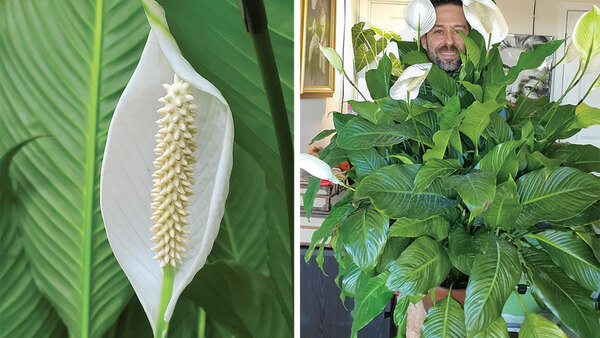

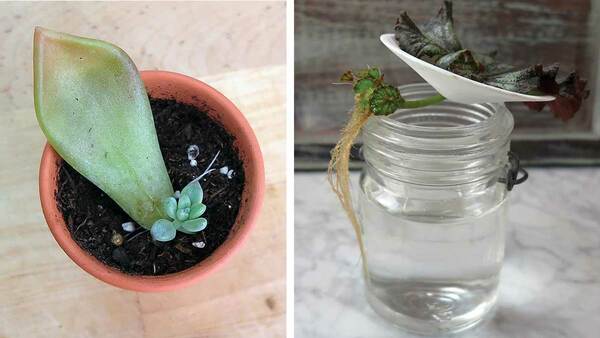













Comments
Log in or create an account to post a comment.
Sign up Log in